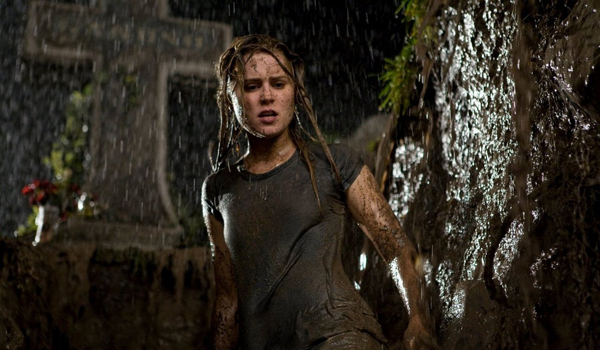Culture
The Bloody Truth: “Drag Me To Hell”

Starting this week, The Bloody Truth will move to Wednesdays. Don’t fret; it’s still the same rundown of quality horror cinema and its subtexts, courtesy of horror enthusiast Calhoun Kersten.
Director Sam Raimi has the distinguished pleasure of being one of my most beloved (if you’ve seen Army of Darkness or any of the Evil Dead movies, you know why) and feared (how did Spiderman 3 go that wrong?) directors. While the man has a number of genre films under his belt, Raimi has always excelled at his own brand of horror. The charm of Raimi’s approach is that each film has some legitimate elements of horror mixed with slapstick, over-the-top comedy. What is easily most surprising with his 2009 entry, Drag Me to Hell, is that Raimi proves that even after all these years and all his failures (For Love of the Game? Seriously?), he fell right back into place with the horror film.
Drag Me to Hell actually represents a bit of an evolution for Raimi. The Evil Dead franchise thrives on being timeless, never content to exist in a defined time or place. With Drag Me to Hell, he proves that he’s unafraid to speak about the problems of the time. For those unaware of the plot, the movie follows Christine (Allison Lohman), a young loan officer at a bank. When she’s confronted by an old gypsy woman asking for a loan extension to save her home, the young woman “shows initiative” and refuses her claim. The old gypsy woman curses her for her cruelty, and terrifying consequences ensue.
How does this speak to the time in which Drag Me to Hell was created? At the height of the housing crisis, with the economy still in shambles, who’s more villainous than the banker? That’s why it seems like such an odd choice to have Christine as our protagonist. From the moment that she denies Mrs. Ganush, the audience continues to identify with Christine as she suffers for what she’s done, but to be entirely honest, she sort of deserves to suffer. I’m not saying she deserves to go to hell, but her choice to deny Mrs. Ganush doesn’t stem from anything than her own selfish desire to have her boss notice her and consider her for a promotion.
Still, even though the inciting incident is surprisingly topical, Raimi isn’t content to leave his timeless tactics behind. Most of the scary scenes play out much like you’d expect from an old film. A lot of what drives the movie’s sense of fear is based on what you don’t see, as well as establishing a solid sound design to appropriately convey feelings of abject terror. Still, this isn’t to say that Drag Me to Hell doesn’t play around with the visuals. After all, sight gags are a bit of a Raimi tradition, so it’s only fitting that he still employ some. For the most part, this is where the humor of the movie comes into play. Drag Me to Hell has no qualms about using gross-out humor to achieve its goal of making the audience laugh or cringe.
A lot of these effects are achieved by the simplest means possible. They are practical, as opposed to the CGI-heavy influences of most modern horror films. However, the film doesn’t entirely stray from those either. In fact, it’s the continued use of CGI in pivotal scenes that in many ways, weakens the film. Not only is it appallingly bad CGI, but it completely took me out of the moment when you see it. For most casual film-goers, I can’t imagine it will be much of a problem, but what about those who were excited to see Raimi find his way back to his roots? It’s a disappointment to see him evolve in his story, only to falter in its execution in some scenes.
Drag Me to Hell isn’t an entirely uncharming entry into Sam Raimi’s filmography, or even the horror genre as a whole. It celebrates its positioning in American history witha stylish flair that sets it apart from so many of the other contemporary horror films of the time. Still, as I stated before, it’s not without its problems. Its willingness to accept the technical conventions of the time seems to date the film, even only 2 years after its release. nevertheless, Drag He to Hell is a good time and a fine return to form for Raimi.
[…] write a weekly horror column for Heave Media so I just bought a bunch of shitty horror movies, like The Fog remake, so I’d […]